I must have passed by this place countless times on my way to Abbottabad and back, and was always intrigued by its name. Khota Qabar! Donkey’s grave, that is. Why, I wondered, so much reverence for a dead donkey?

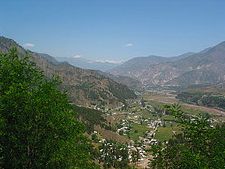
Khota Qabar lies on the Karakoram Highway, about 60 miles north of Islamabad and 7 miles short of Abbottabad. It is precisely where the road starts climbing into the mountains of Mansehra and beyond, into the picturesque Kaghan valley and the Northern Areas. I always knew it as a place where truck drivers coming up from the planes stopped to let their engines cool down, and to top up the radiators with cold water from a nearby stream, to ready their vehicles for the climb ahead. Because of the presence of trucks, several khoka restaurants have sprouted at the spot and are doing a brisk business.
Khota Qabar is so small a place that you won’t find it on any map of Pakistan. However, to my pleasant surprise, a Google search turned up the following information on the place: latitude 34.09; longitude 73.17; elevation 3,251 feet. I was impressed — with Google.
Like many other places and things in life, I took this place for granted and never bothered to enquire how or why it came to be so named. But when I did – only recently – I uncovered a fascinating story behind it. A story of a dedicated man and his mission.
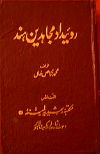 The story begins, of all the places, in Rai Breli, a town in present day Uttar Pardesh, India and ends in the mountains of Balakot, a town in the far north of Pakistan. It is the story of a man named Syed Ahmed. He was born in Rai Breli in 1786. He was a deeply religious man. His life mission was to usher in, once again, the glorious Islamic past. He wanted to establish an Islamic state on the pattern of the early Caliphate, first in the subcontinent and then, possibly, in the rest of the world. To achieve this he decided to wage a jihad against the “infidels†who ruled the subcontinent then. Thus, he became one of the earliest, if not the first, native Jihadi of the subcontinent.
The story begins, of all the places, in Rai Breli, a town in present day Uttar Pardesh, India and ends in the mountains of Balakot, a town in the far north of Pakistan. It is the story of a man named Syed Ahmed. He was born in Rai Breli in 1786. He was a deeply religious man. His life mission was to usher in, once again, the glorious Islamic past. He wanted to establish an Islamic state on the pattern of the early Caliphate, first in the subcontinent and then, possibly, in the rest of the world. To achieve this he decided to wage a jihad against the “infidels†who ruled the subcontinent then. Thus, he became one of the earliest, if not the first, native Jihadi of the subcontinent.
This was the time when the Mughal rule in India had virtually ceased to exist. The Mughal Empire stretched barely beyond the present city of Delhi. The dominant powers of the time were the British Empire, represented by the East India Company, which controlled most of the Northern India, the Marhatta Empire to the south, the Sikh Empire in the north-west and Kashmir, and hundreds of minor kings, maharajas and Nawabs in various parts of the land.
Syed Ahmed understood that it was not possible to fight the British. They were better organized, better equipped and in firm control of most of the northern India. He, therefore, decided to emigrate to what is today the NWFP in Pakistan and wage a jihad from there. After beating the Sikhs in the NWFP and Kashmir, he imagined, he could then take on the British.
His choice of NWFP as a launching pad for the jihad was based on the assumptions that it was predominantly a Muslim area bordering on another Muslim state, Afghanistan, that its people had a reputation of being good warriors, and that they were unhappy with the Sikh rule and ready to take up arms against them.
Armed with these assumptions, a total faith in his mission and trust in God, Syed Ahmed and his devotees left their homes and families (Syed Sahib left behind his two wives) and embarked on a difficult and circuitous journey to Peshawar, via Sindh, Quetta, Qandhar and Kabul. Among his companions was also Shah Ismail, a grandson of Shah Waliullah of Delhi.
After reaching Peshawar, Syed Sahib tried to enter into alliances with the local chiefs and khans, often unreliable, to gain their support for his Jihad. He managed to raise an “army†of mujahideen, who engaged in a few skirmishes with the Sikhs and also launched nighttime raids on a few towns, notably Akora Khattak and Hazro. But these skirmishes and raids did not yield any strategic gains.
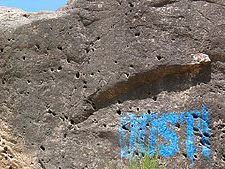
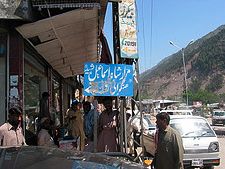
Most narratives on the subject, at least the one’s I have read, even though rich in trivia, are incoherent and confusing. Cutting through the web of confusion, however, one finds that Syed Ahmed Brelvi, moving from place to place for 4-5 years in the Frontier province, turned up at Balakot sometime in the first quarter of 1831. He was 46. In the process he also married a third wife, a young woman from Chitral named Fatima.
Syed Sahib’s strategy was to defeat the Sikhs at Balakot and then march on to Kashmir next door. His starry-eyed optimism is evident from one of his last letters he wrote to the Nawab of Tonk in India, who, as a gesture of support and sympathy, was housing Syed Sahib’s two wives as guests on his estate. The letter was written on 25 April 1831 (translation and paraphrasing is mine):
“I am in the mountains of Pakhli (name of the area). The people here have welcomed us with warmth and hospitality and have given us a place to stay. They have also promised to support us in the jihad. For the time being, I am camped in the town of Balakot, which is located in the (river) Kunhar pass. The army of the infidels [kuffars] is camped not too far from us. Since Balakot is located at a secure place (surrounded by hills and bounded by the river), God willing, the infidels will not be able to reach us. Of course, we may choose to advance and enter into a battle at our own initiative. And this we intend to do in the next two or three days. With the help of God, we will be victorious. If we win this battle, and, God willing, we will, then we will occupy all the land alongside the Jehlum River including the Kingdom of Kashmir. Please pray, day and night, for our victory.â€
Obviously, Syed Sahib believed in and greatly relied upon divine help and miracles.
Hari Singh was the governor of Kashmir and NWFP at the time, representing Maharaja Ranjit Singh who sat in Lahore. He was a clever and ruthless administrator. His forces under the command of Sher Singh lay in wait at Muzaffarabad. Some of his contingents had already moved to occupy the hilltop, known as Mitti Kot, overlooking the town of Balakot.
Syed Sahib expected the Sikhs to come down from their perch at Mitti Kot and attack the mujahideen. He, therefore, had the paddy fields, between the town and the hills, flooded with water, hoping that the advancing Sikhs would get mired in them and the Mujahideen could then pick them up like sitting ducks — literally. But the Sikhs had their own plans. They did not move and waited instead for the mujahideen to make the first move.
The mujahideen obliged on May 6, 1831. It was a Friday. A bizarre incident occurred that morning, which precipitated the battle. While the mujahideen were still having breakfast and, at the same time, keeping a wary eye on the movement of the enemy at Mitti Kot, one of them, Syed Chiragh Ali from Patiala, suddenly expressed a desire to eat kheer (rice pudding).
Since kheer was not on the menu that morning, Chiragh Ali fetched the necessary wherewithal and set about preparing kheer for himself. (It sounds bizarre reading about it, but people are known to do strange things in stressful conditions.)
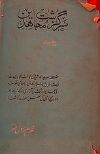
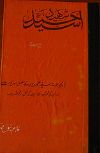 While Chiragh Ali was stirring the pot and nervously looking at the Sikhs on the hilltop, something came over him and he shouted, “There, I see a beautiful hoor (houri) dressed in red. She is calling me!†He threw away the ladle with which he was stirring the pot, and declared that he would eat only from the hands of the hoor. With this announcement he charged headlong towards the hill. It all happened so suddenly that before anyone could realize what was happening, Chiragh Ali was in the middle of the paddy fields, struggling to run in the mud. The Sikhs who must have been watching the scene with some amusement picked him in the sights of their rifles and shot him dead — in the mud. According to the narrative, Syed Chiragh Ali was the first martyr of the battle of Balakot.
While Chiragh Ali was stirring the pot and nervously looking at the Sikhs on the hilltop, something came over him and he shouted, “There, I see a beautiful hoor (houri) dressed in red. She is calling me!†He threw away the ladle with which he was stirring the pot, and declared that he would eat only from the hands of the hoor. With this announcement he charged headlong towards the hill. It all happened so suddenly that before anyone could realize what was happening, Chiragh Ali was in the middle of the paddy fields, struggling to run in the mud. The Sikhs who must have been watching the scene with some amusement picked him in the sights of their rifles and shot him dead — in the mud. According to the narrative, Syed Chiragh Ali was the first martyr of the battle of Balakot.
What followed the shooting was total chaos and confusion. Syed Sahib, abandoning his earlier battle plan, ordered his men to attack. The mujahideen rushed forward and they, too, got mired in the muddy fields. The Sikhs then made their move. In a battle that lasted most of the day, amidst shouts of Allah-o-Akbar and wahe guruji ki fateh, Syed Ahmed and Shah Ismail were killed along with many mujahideen. The number of dead mujahideen varies, depending on the source one uses, from 300 to 1300. Whatever the numbers, the mujahideen had met their Waterloo at Balakot
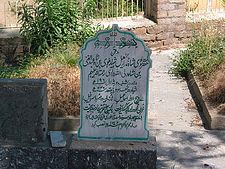
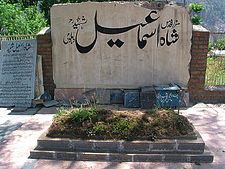
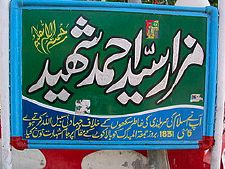
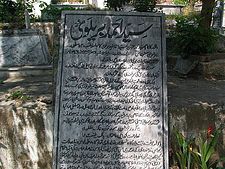
Nearly two centuries later, on October 6, 2005, an earthquake measuring 7.6 on the Richter scale shook and flattened the town of Balakot. Miraculously, however, it spared the graves of Syed Ahmed Shaheed and Shah Ismail Shaheed. Perhaps a reminder that miracles do happen. But one cannot always rely upon them.
What about Khota Qabar? Why was Khota Qabar so named?
On their way to Balkot the mujahideen had camped somewhere near present day Abbottabad. The Sikhs, in order to choke the mujahideen’s supply lines, posted troops on the hills overlooking the road that led through a gorge to Abbottabad. The mujahideen, sensing the risk of sending convoys through the gorge, cleverly, hired the services of a donkey without a handler to carry their supplies. Yes, Just one donkey.
Even though the donkey has, for some reason, become a metaphor of stupidity in our part of the world, it is not stupid at all. In fact, it has a good memory and uses it very intelligently. One of the unique traits of the donkey is that once he carries a load to a destination, he memorizes the route and does not need the help of a handler to be able to go back to the same place. Just a light kick in the back sends him trudging quietly to his destination. So, unknown to the Sikhs, this dutiful donkey trudged back and forth in the darkness of night carrying supplies to the mujhideen.
It wasn’t long before the Sikhs found out who the secret courier was. They shot him dead one night when he was carrying a load of goods through the gorge. The mujahideen mourned the loss of the donkey and honored him by burying him respectfully in a grave. The place came to be called as Khota Qabar. The grave may not have survived but the name did. Only a few years ago, someone decided to change the name to Muslimabad! Although a road sign does indicate the new name, the people in the area still know the place by its old name. And so does Google!
The above story, except the part on Khota Qabar, which is anecdotal, is based the following books:
1. Syed Ahmed Shaheed – Mujahid-e-kabir by Ghulam Rasool Mehr, 1981
2. Roedad-e-Mujahideen-e-Hind by Muhammad Khawas Khan, 1983



















































A GREAT MISCONCEPTION.
It is WRONG to think that Hazrat Syed Ahmad and Shah Ismail saheeds fought battles and did Jihad to gain rule over Muslim lands. Actually their jihad was for FREEDOM OF RELIGION. As British rulers provided that so there was NO reason for them to fight with British and they did NOT.
What current Mullahs are doing is no different than what sikhs did and the same practices against which Syed Ahmad shaheed did Jihad.
You may like to read detail about their mission in a book. I highly recommend this book:
Hindustani Musalman aur Jihad (Indian Muslims and Jihad) By Hafiz Sher Muhammad:
http://www.aaiil.org/urdu/books/others/hafizshermu hammad/hindustanimusalmanjihad/hindustanimusalmanj ihad.pdf
http://www.aaiil.org/urdu/books/others/hafizshermu hammad/hindustanimusalmanjihad/hindustanimusalmanj ihad.shtml
Say what you may, but these men had the courage to fight in an effort to regain the political power lost by the otherwise useless later day mughals and petty nawabs. So while those in Delhi and Meerut are celebrating the 1857 mutiny of the British Indian soldiers, we in Pakistan can move our date of
Syed Ahmed “Shaheed” thus was the forerunner of the same mercenaries that are now threatening Pakistan…
I was brought up in a very ‘secular’ family in Karachi. But once when we stopped in Balakot on our way to the Kaghan valley my very westernised dad went to offer ‘fateha’ on the graves of these two great man. I can swear I had never seen my dad offer fateha ever before or after on any grave. I was 9 years old then and then my dad told me the whole story of these two great men who had kept the flame of the faith burning in the midst of the the darkness of the British Raj. My dad told me that these were the only few and true Muslims at a time when everyone else had left Islam and of course that the British ( by analogy our American masters now) ARE the enemy.
Today as I see history repeating itself in the same part of the world with a simlar group of puritanical ( would you say fanatic?) Muslims being pursued by mercenary forces fighting NATO’s proxy war, I cannot help but think that Syed Ahmed Shaheed might be turning in his grave, Syed Ahmed Shaheed was portrayed in a similar light by all servants of the Raj (not just) by Hindus and Sikhs as a ‘bad Muslim’ and of course those who became subservient to the colonialists as ‘good Muslims’. I will refer you in this context to the famous ghazal by Hakim Momin Khan Momin Dehlvi
Thaani thi hun ne ab na milenge kisi se hum
Kya karein magar ho gaye majboor jee se hum
Le naam arzoo ka to dil ko nikaal lein
Momin na hon jo rabt rakhein ‘bid-ati’ se hum
The reference to ‘bid’at’ was the Barelvi-Deobandi controversy stirred by the British about Syed Ahmed Barelvi shaheed in order to defame him. May the souls of Syed Ahmed and his companions rest in peace. Ameen. It is our tragedy as the Muslims of the Indian subcontinet that we mock and demean our own heroes and benefactors as the current battle of Swat exemplifies
Alfaaz-o-ma’ani mein tafawut nahee lekin
Mullah ki azaan aur, Mujahid ki azaan aur
‘Hindustani Musalman aur Jihad’ by Hafiz Sher Muhammad
is a good history book. this book tells in great detail why
Hazrat Syed Ahmad shaheed of Rai Breli and Hazart Shah Ismail Shaheed did Jihad and recived martyrdom at Balakot.
I am sure author of above article will also find interesting information.
Link:
http://www.aaiil.org/urdu/books/others/hafizshermu hammad/hindustanimusalmanjihad/hindustanimusalmanj ihad.pdf
http://www.aaiil.org/urdu/books/others/hafizshermu hammad/hindustanimusalmanjihad/hindustanimusalmanj ihad.shtml